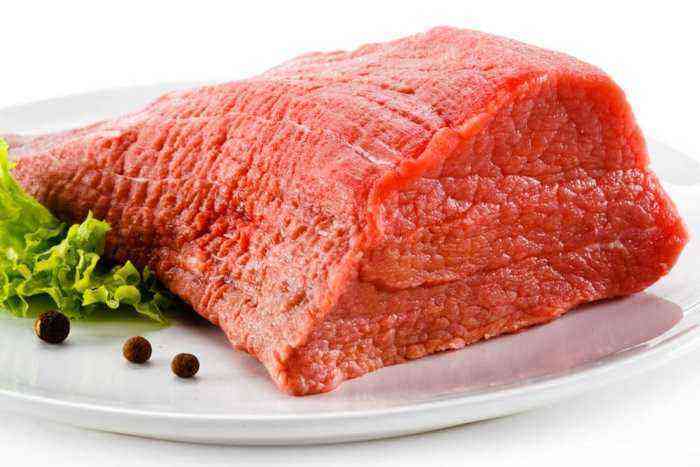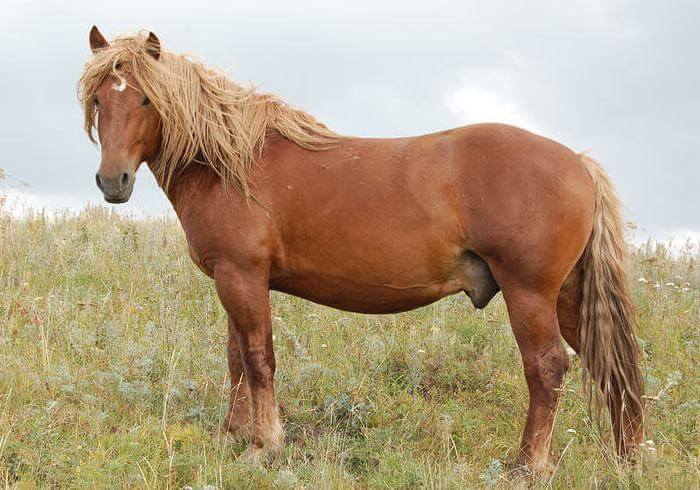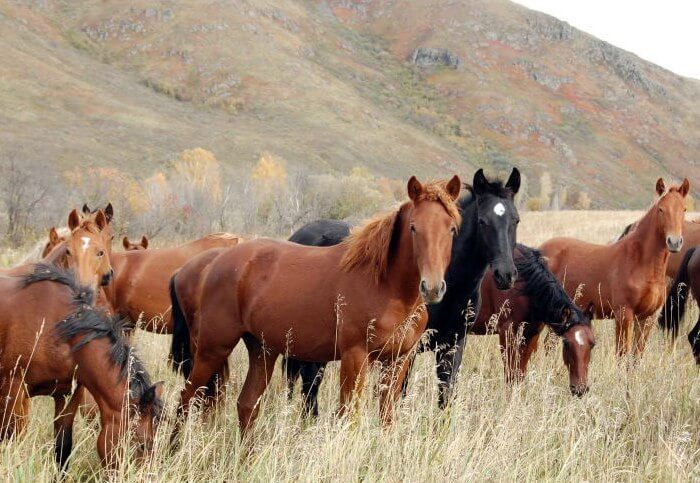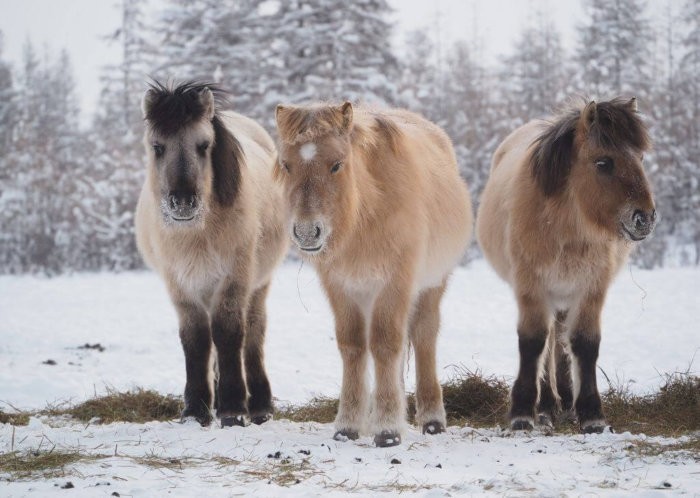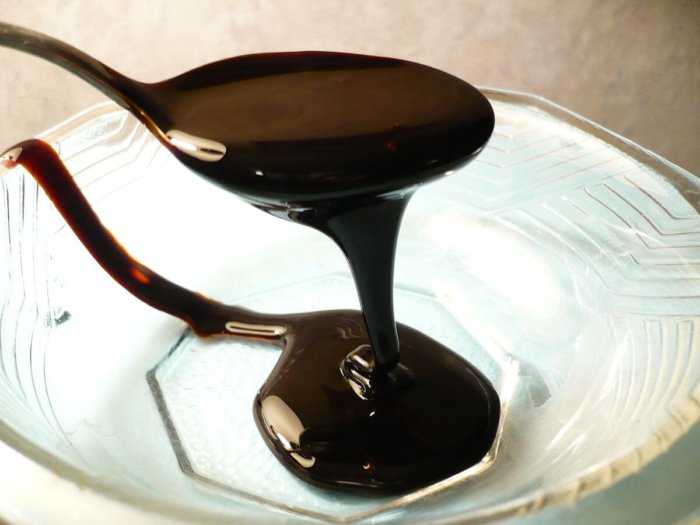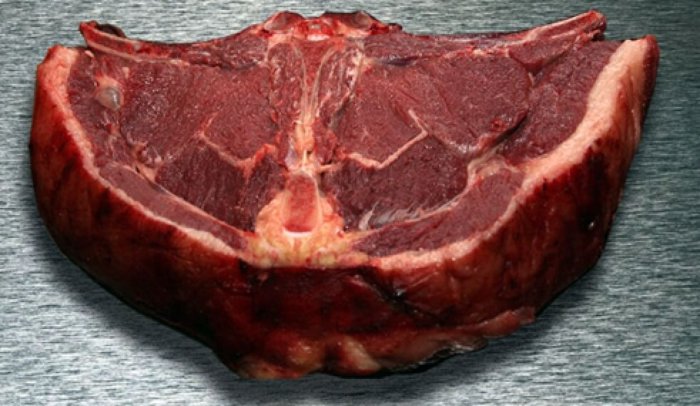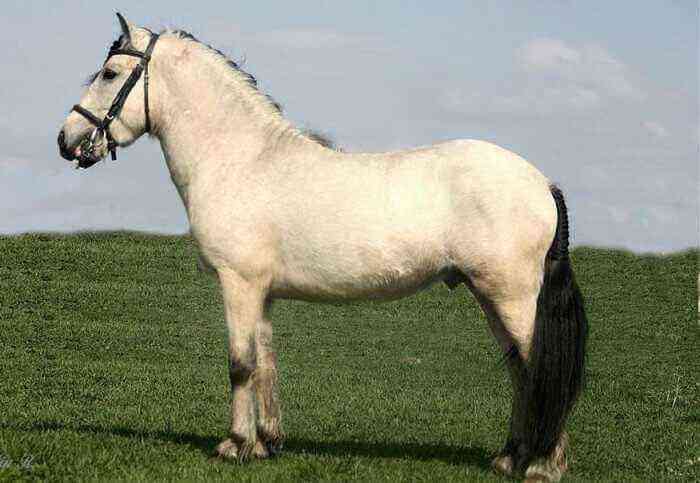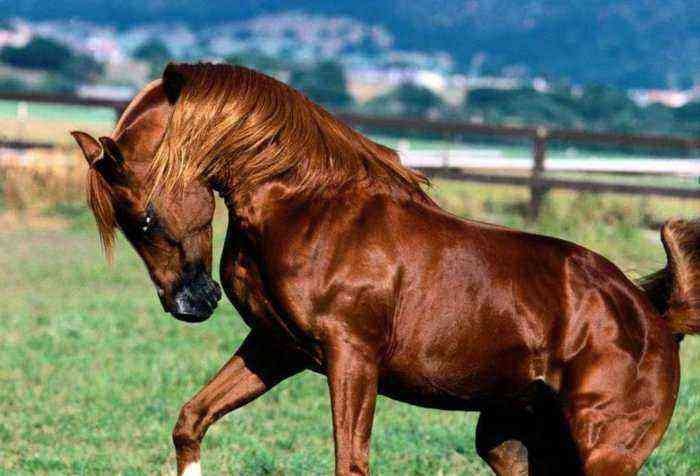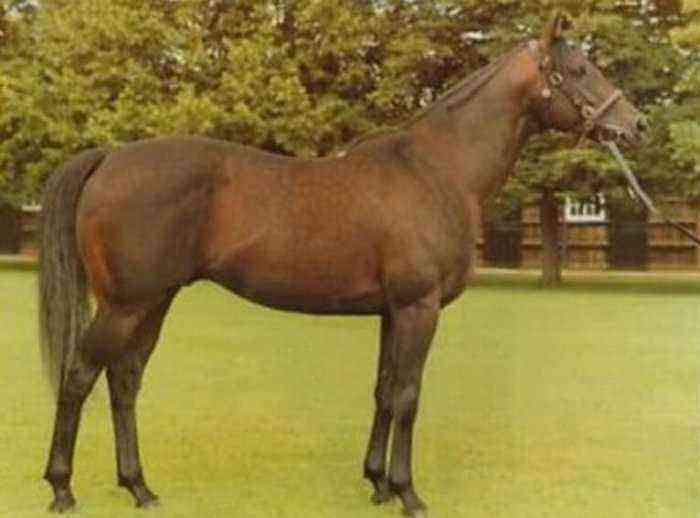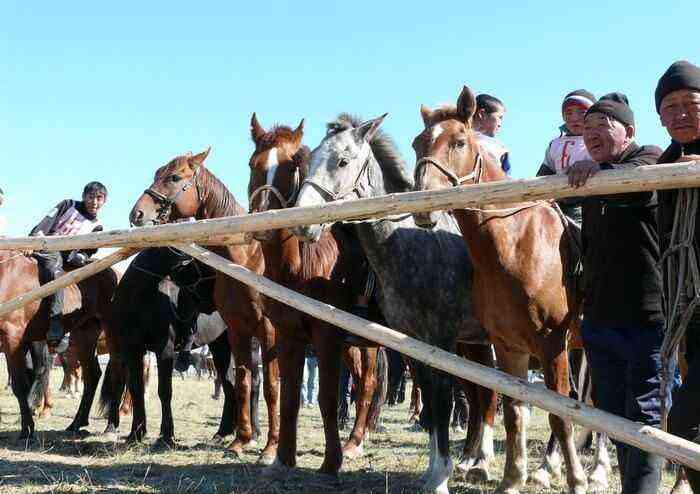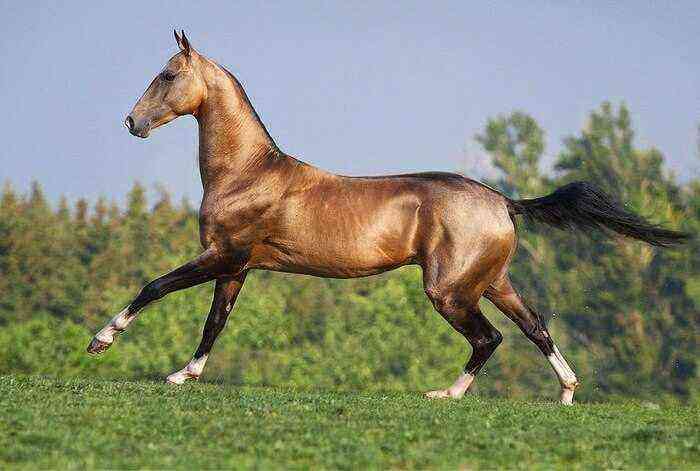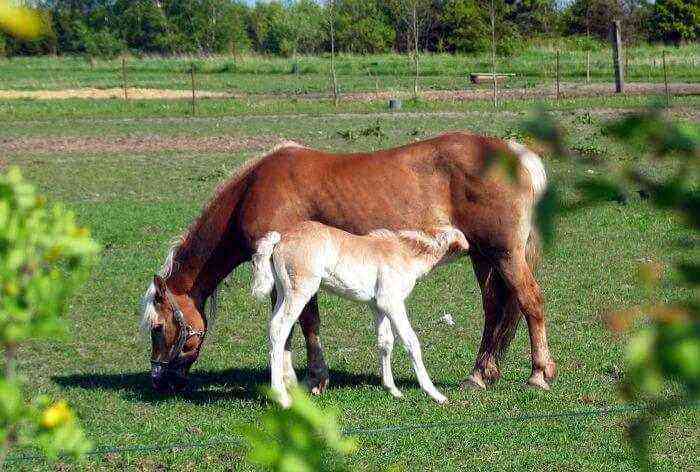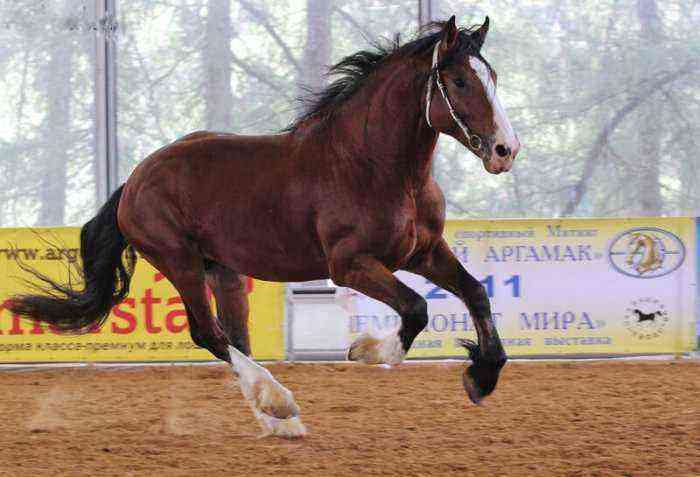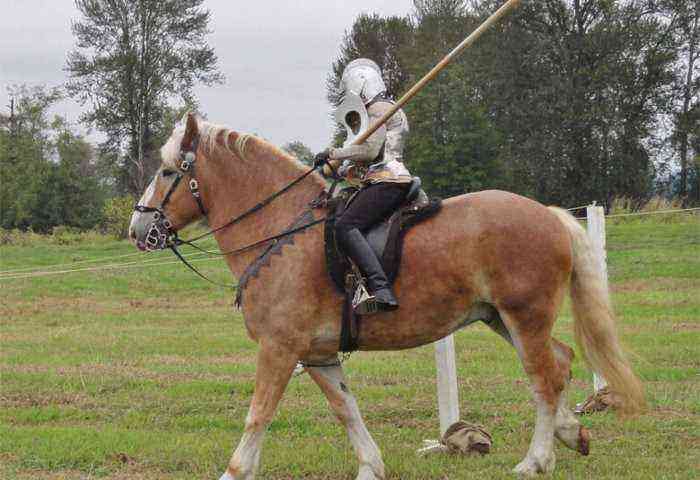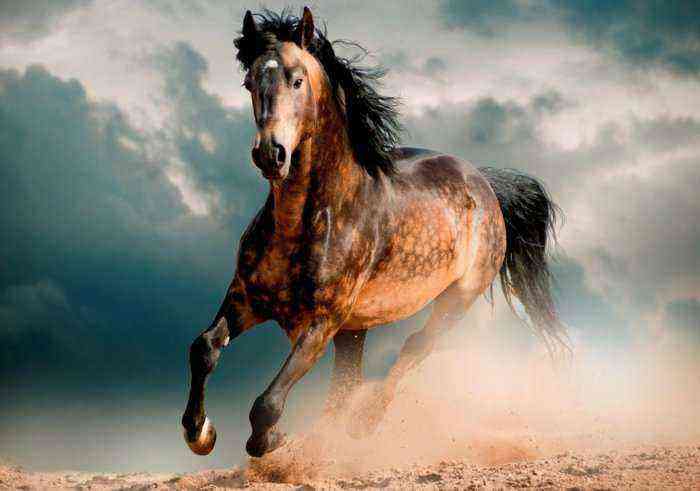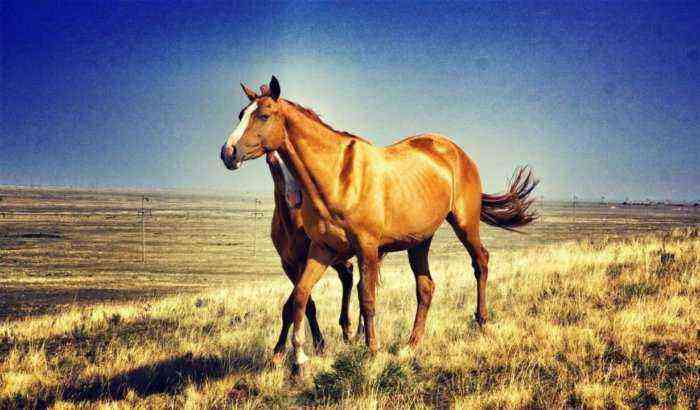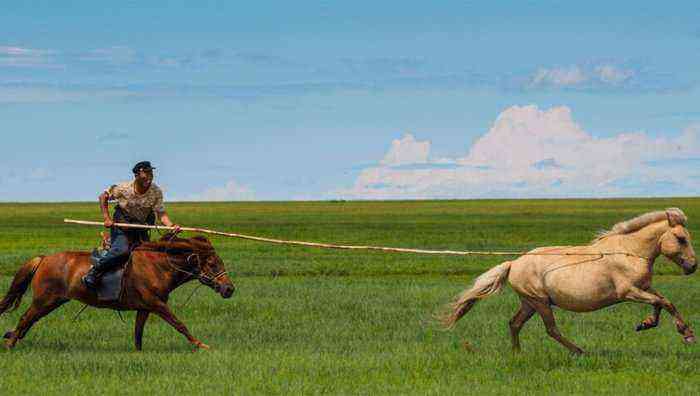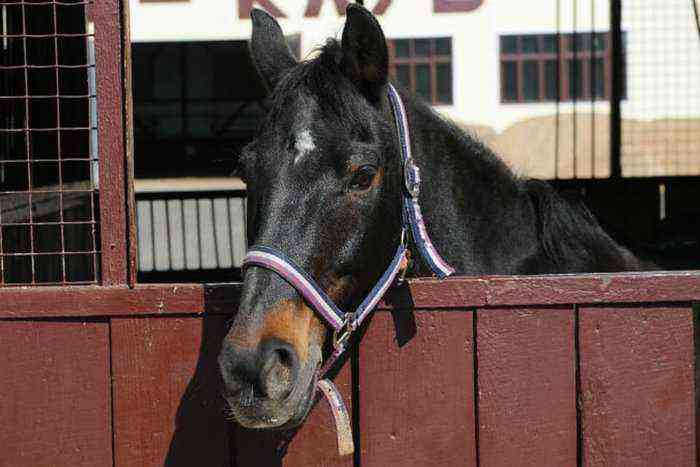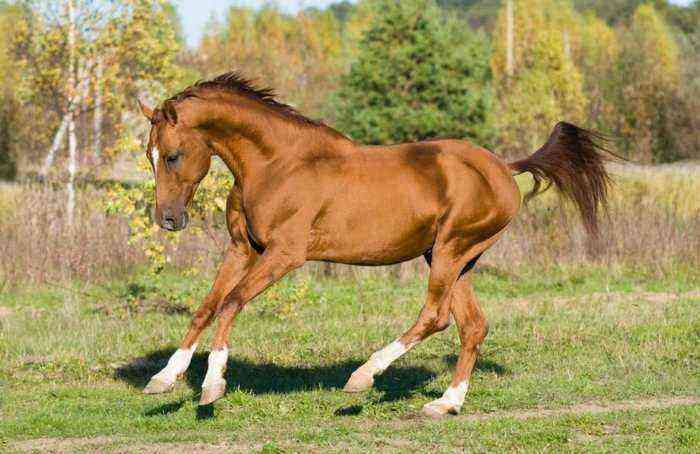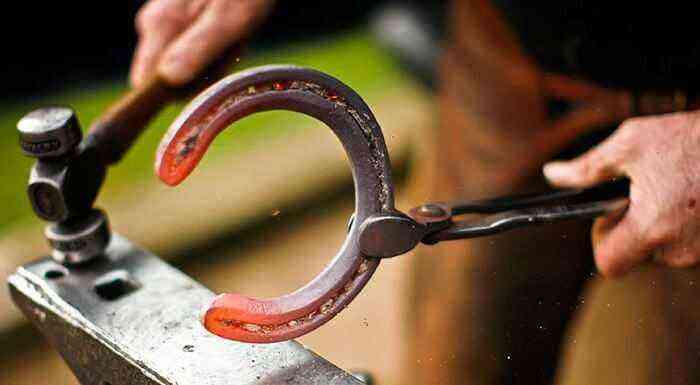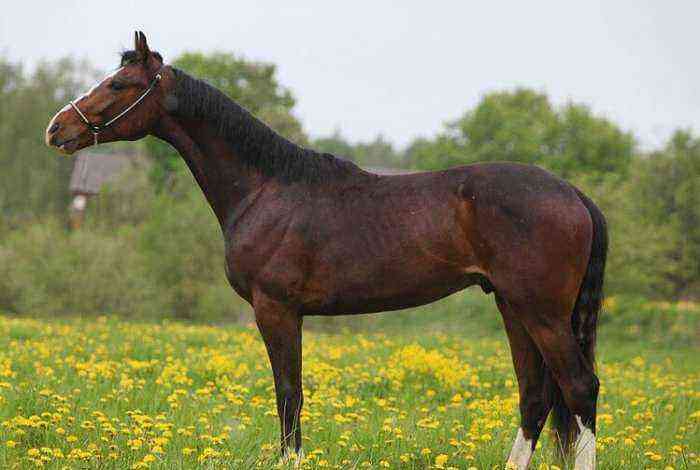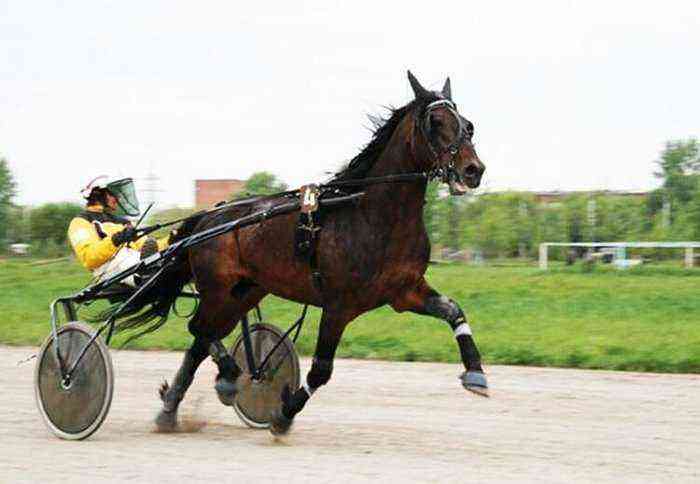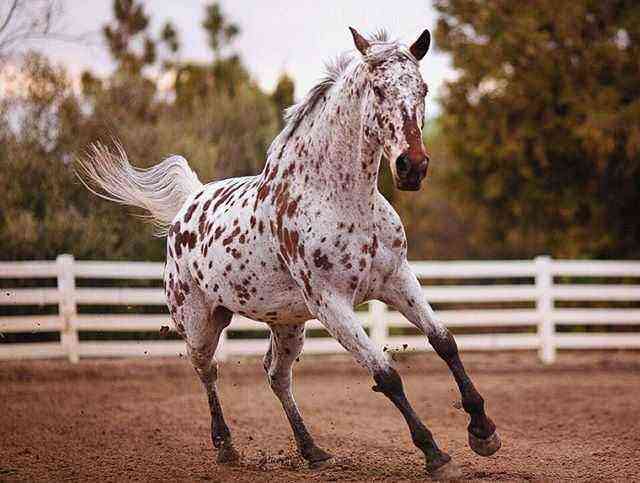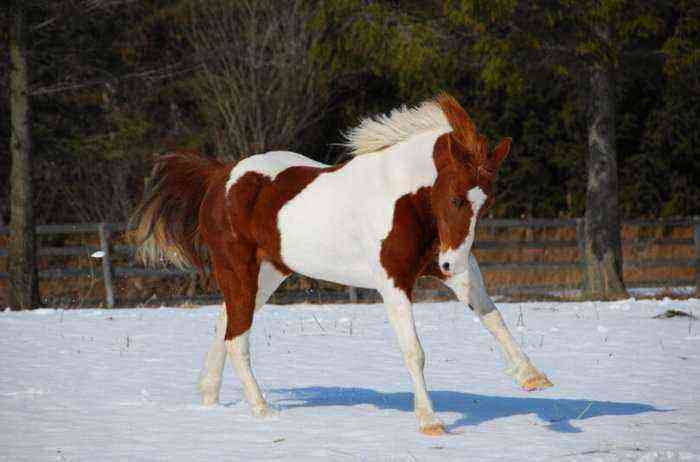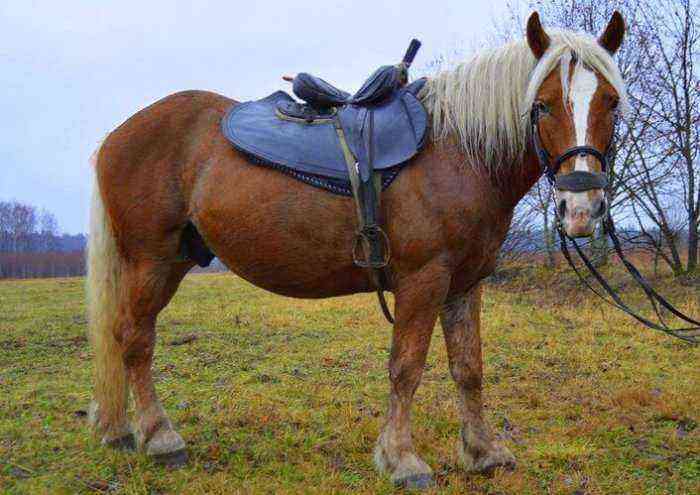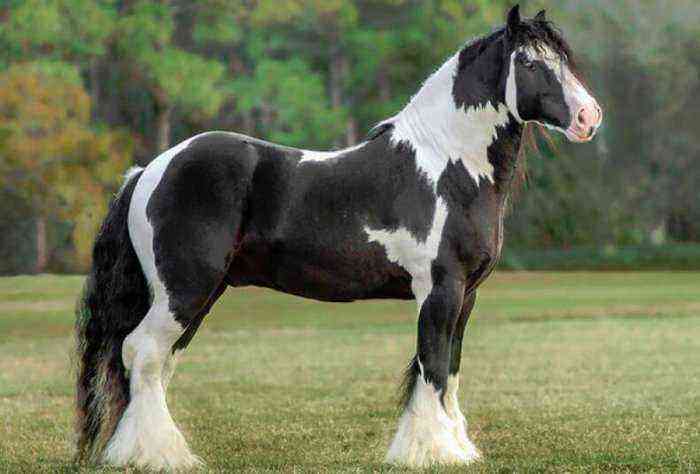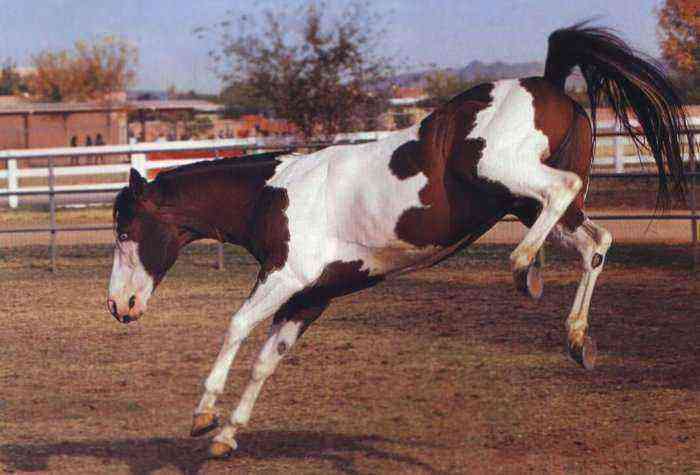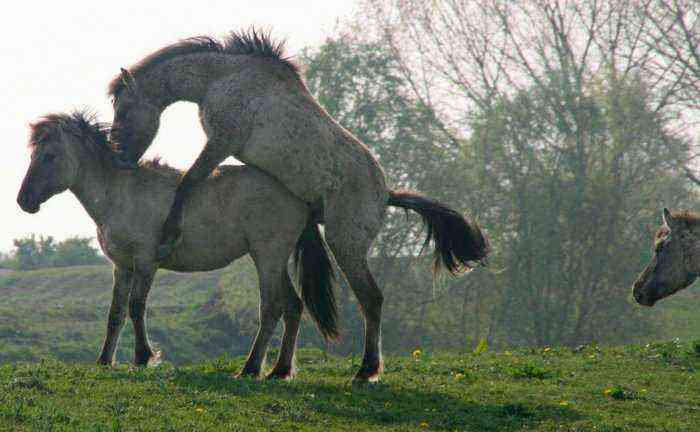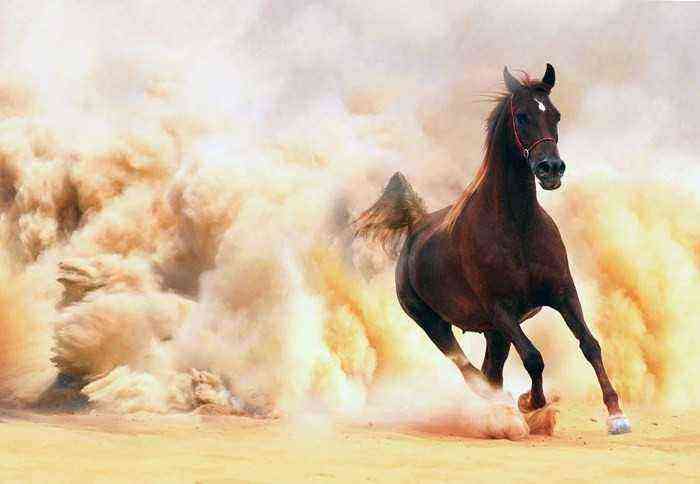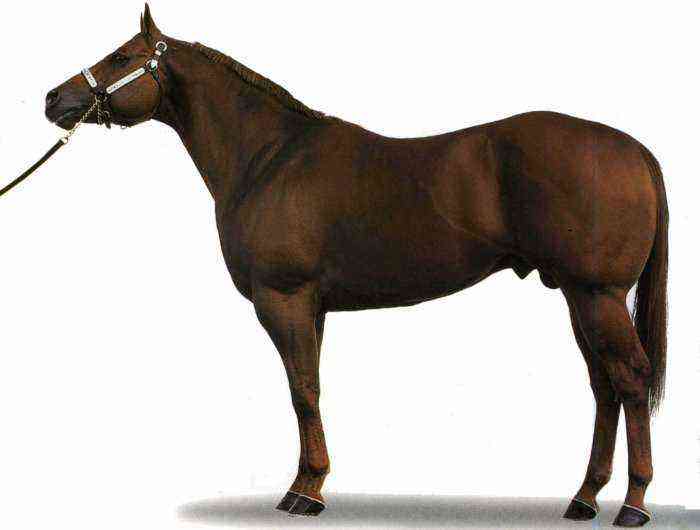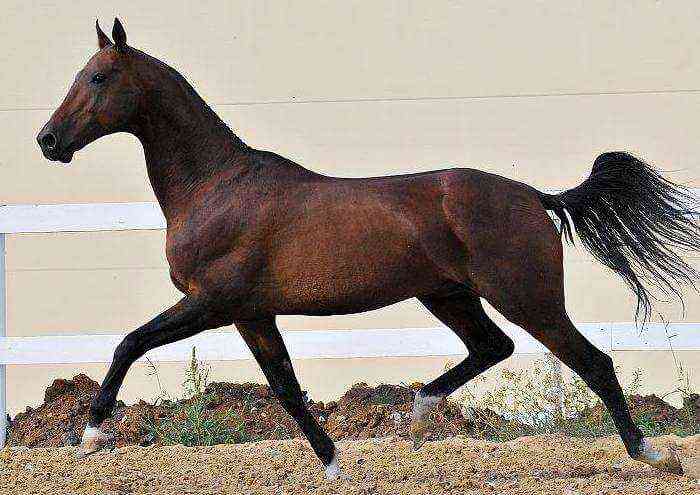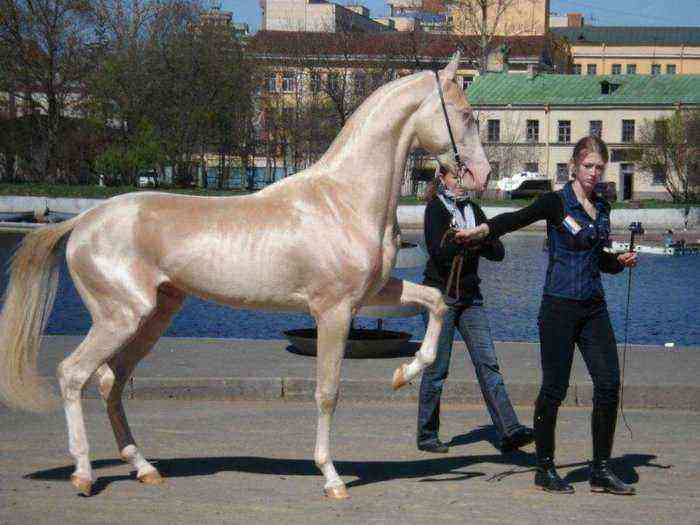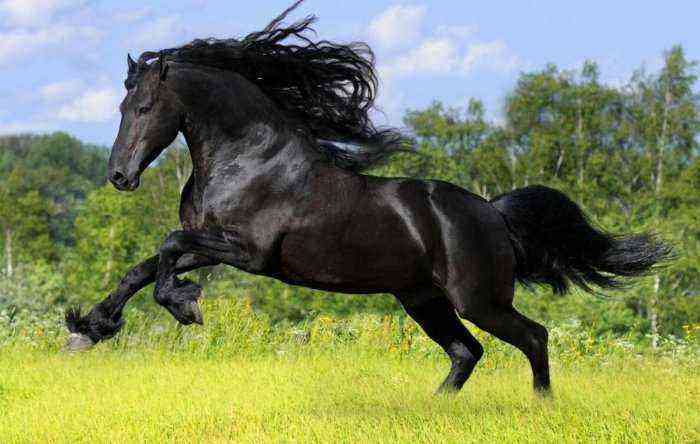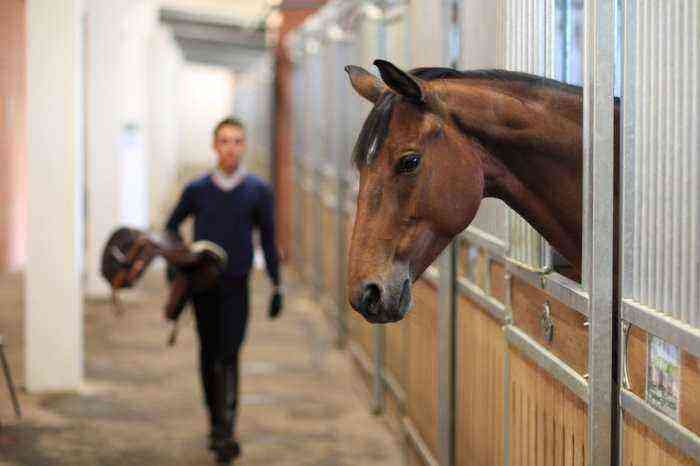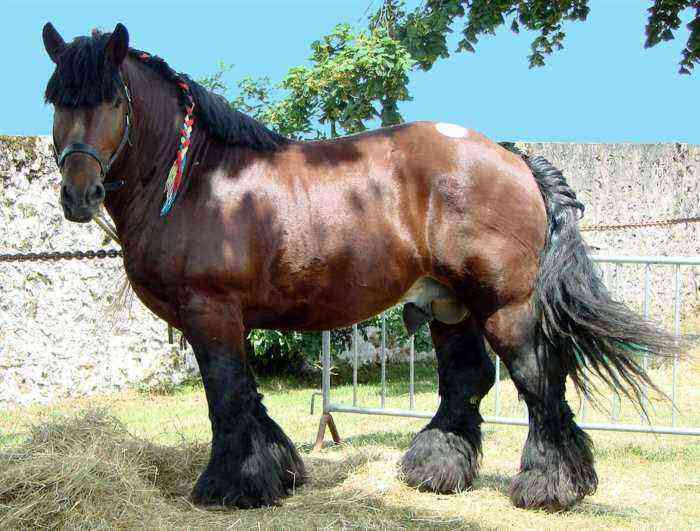Since ancient times, our ancestors used horses as a mode of transport, as well as a draft force for the transport of goods and heavy carts. Breeding horses for meat has also gained some popularity. Moreover, if the first two directions for the use of such animals with the development of technology have become less in demand, then the third remains promising and an increasing number of breeders are implementing it. In this regard, several specialized breeds of horses were bred and specific methods for fattening living creatures were developed.
Meat breed of horses
Pros and cons of breeding horses for meat
The consumption of horse meat for food has been practiced since ancient times. Dishes from such meat were highly valued in ancient Rome, Greece, and Persia. It also enjoyed a certain popularity among the Slavic peoples, losing it only with the advent of Christianity. And among the Kazakhs, Bashkirs and other eastern peoples, horse meat was generally valued much higher than sheep or cow meat.
Today, breeding horses for meat is becoming popular in Russia. The reason for this is the wide range of benefits of such an undertaking and the advantages of the product itself. These include the following points:
- the meat of young horses suggests a delicate texture, good taste and is considered dietary;
- such a product contains an increased amount of nutrients, vitamins and fatty acids necessary for the normal functioning of the body;
- horse breeding can be a highly profitable business, as demand in this direction is steadily growing, and the number of product suppliers is still small;
- horse meat has a low cost, but on the market at a price only slightly inferior to beef;
- such animals suggest high meat productivity;
- if there is access to pastures, it is possible to significantly save on fodder for livestock;
- if desired, horse milk can also be sold additionally.
But it is worth noting that along with a wide list of advantages, such activities involve certain risks and disadvantages. The most significant among them are the difficulties of finding sales of products. In domestic open spaces, horse meat is used mainly in the production of premium sausages, mixing it with other types of meat. In its pure form, such products on the market are still considered exotic and are of interest not to all buyers. In this regard, it can be quite difficult to find those who want to buy the meat of farmed horses.
Attention! It must be borne in mind that the meat of animals that are more than three years old gradually coarsens. Therefore, slaughter should be planned up to this mark.
Meat productivity of horses
Meat productivity is determined by several indicators. The weight of the animal, the percentage of pure meat from the total mass, and precocity are taken into account. All these indicators have individual values for each meat breed of horses.
horsemeat
As for the average values, the slaughter yield of meat from the carcass of a killed horse of a meat breed ranges from 48–55% of the total weight. If you properly organize the nutrition of the animal, then this parameter is quite possible to raise to 60%. Most often, the highest productivity indicators can be traced in animals that are stabled. With herd content on pasture, the composition of the diet does not always allow you to gain weight. Therefore, the indicators fluctuate more.
Horses of 2–3 years of age are suitable for slaughter. It is at this time that horse meat acquires the optimal texture and taste. Some breeders also practice later slaughter. But in this case, the meat will be coarser and more fibrous.
The Yakut, Bashkir, Jabe and Buryat breed lines are distinguished by the highest productivity among the whole variety of meat breeds of horses.
Meat horse breeds
It is worth noting that among the whole variety of existing horse breeds, only a few were purposefully bred as meat. In the process of selection, breeders sought to instill in them the appropriate qualities. Today, among all these varieties, three are the most popular:
- Kazakh.
- Novoaltayskaya.
- Yakutskaya.
Kazakh
Kazakh horses began to be bred on the territory of Kazakhstan more than a thousand years ago. Traditionally, local tribes raised horses exclusively in the herd way on open pastures. In this regard, such animals have a high resistance to cold, unpretentiousness in terms of feeding, rapid weight gain even with a poor diet.
Representatives of not only local breeds of horses, but also Akhal-Teke, Arabian and Mongolian horses took part in the formation of the breed. In connection with the influx of blood of other varieties, all Kazakh horses were divided into two main types:
- Heavy. It was this type of horse that was originally called jabe. They are distinguished by a stronger constitution. This type is highly valued in meat horse breeding.
- Pacers. Their main difference is a lighter constitution and good endurance. Better suited for riding.
Kazakh horse breed
The growth of the Kazakh horse varies between 132–144 cm. Of the features of the exterior of the animal, there are:
- strong muscular physique;
- long rectangular body;
- flat strong back;
- rather wide and deep chest;
- a short croup that often hangs down a little;
- strong legs with developed ligaments and hooves of the correct form;
- small neck;
- proportional head with a straight profile.
Productivity
When a horse reaches the age of 3,5 years, its weight, depending on the diet and gender, ranges from 350 to 450 kg. From the indicated carcass weight, the yield of pure meat varies between 53–60%. At the same time, the meat is distinguished by an average calorie content and high palatability.
The animal also shows quite good performance in terms of milk production. For a day, one mare is able to give from 15 to 20 kg of milk.
Among the two existing types of Kazakh horses, it is the jabe that is used for productive horse breeding.
Novoaltayskaya
The Novoaltai breed appeared only in 2000. Breeders bred it on the basis of the more famous Altai variety of horses. The goal of the breeders was to improve the meat qualities of the animal. To accomplish this task, stallions of a Soviet heavy truck and a Lithuanian heavy draft horse were used.
This breed has a pronounced meat physique. The growth of an adult stallion at the withers is 156 cm. At the same time, the body length of the animal reaches 167 cm, and the weight of an adult horse reaches 670 kg or more.
Among the characteristic features of the appearance of animals, the following points stand out:
- long body with developed muscles;
- a flat back with a strong lower back;
- large croup;
- strong legs of medium length;
- massive neck;
- wide chest;
- rough head.
Novoaltai breed
The mane and bangs of the animal are quite long. The prevailing colors of the horse are brown, bay and black.
Productivity
The productivity indicators of the Novoaltaysk horses are quite high. The average slaughter yield of meat in stallions is 58-60%. Livestock for slaughter is determined at the age of 2,5-3 years. In the absence of pastures with abundant vegetation, foals under the age of one year are often practiced. Also, mares assume average indicators in terms of milk production.
It is worth noting that the strong constitution of the animal and endurance allow it to easily transport large loads. In addition, the New Altai horses show themselves well in riding.
Yakutskaya
Another extremely popular breed in meat horse breeding is the Yakut. Such horses are considered aboriginal in Yakutia and have a very ancient history. During the excavations of individual burials, scientists found the remains of such horses, which are already more than 3,2 thousand years old. The Yakut is the only breed that originated from tundra horses that lived back in the days of mammoths.
These horses are small. As a rule, it does not exceed the mark of 138,9 cm. At the same time, the length of the body of the animal is 146-147 cm.
In the appearance of the horse, the following features are especially distinguished:
- dense body with developed muscle mass;
- flat wide back;
- short legs with strong hooves and bones, as well as developed tendons;
- short massive neck;
- disproportionately large head;
- long mane, tail and bangs.
Also among the characteristic features of the exterior of the Yakut horses is a special coat, which includes a dense undercoat. It protects living creatures from the most severe frosts and allows them to graze even on snowy pastures.
The color of the representatives of the breed is bay, gray or brown.
Productivity
The weight of an adult Yakut stallion is 500 kg. The meat of these animals is distinguished by high palatability. It contains small inclusions of fat, which make the product softer and more tender.
Milk is also widely used, which is given by mares of this breed. Koumiss is made from it and used in the preparation of some other dishes.
Yakut horses
Maintenance and care of horses
In addition to a properly selected breed, in order to obtain large volumes of horse meat, animals also need to be provided with proper care and maintenance. Only in this case will it be possible to significantly increase the size of the horse population and achieve maximum productivity.
The best option for keeping horses of meat breeds is the herd method. It assumes the minimum cost of feed. In addition, in this case, animals gain muscle mass better. But this method is available only if there are vast territories for grazing the herd.
It is best in this case to have several hectares of land, which is sown with perennial vegetation. Also near the pasture there is a stable or paddocks, the area of uXNUMXbuXNUMXbwhich varies depending on the size of the herd.
In the absence of suitable pastures, only stable or paddock keeping is used. But it will be profitable only in the case of parallel use of accelerated fattening, when, in addition to greens, hay and concentrates, starter combined feeds, milk replacer and other components are also used.
Reference. When using the accelerated fattening method, by 12 months a horse can gain up to 450 kg of weight.
Features of fattening
From how well the fattening of the animal is built, its future meat productivity directly depends. To make feeding as balanced as possible and at the same time save money, the following points are taken into account when compiling the diet:
- affordable budget;
- location of the horse breeding enterprise;
- availability of free pastures for grazing livestock.
In terms of feeding, horses are unpretentious. The diet for such animals is based on hay in winter and green vegetation in summer. To complement the main menu and get the most out of fattening, they also use:
- corn;
- various vegetables;
- cake;
- silage;
- molasses from sugar beet;
- cereal bran.
Sugar beet molasses
Animals must have access to plenty of clean water. Also, despite the unpretentiousness of horses, their stomach is quite unstable to various diseases of the digestive tract. Therefore, in addition to the composition of the diet, special attention is paid to the proper storage of feed. They should not contain dust, dirt, impurities. Stocks on which traces of mold or rot are found are also not allowed to be used.
In general, fattening lasts about 2-3 months before the slaughter of animals. Its goal is the maximum growth of muscle mass and, as a result, an increase in the slaughter yield of meat.
How to feed the young?
Feeding foals requires separate consideration. Until the age of two months, the mare feeds the babies. If part of the milk is taken away during lactation, already at the beginning of the second month the missing volume is replenished with milk substitutes and fresh young grass.
The animal is accustomed to concentrated feed from the third week. To do this, he is given a special porridge, which includes:
- crushed oats;
- high-quality grain bran;
- cake;
- corn (add when the baby gets used to the main composition);
- premix.
Parallel to this, hay of legumes or cereals is also included in the diet in small volumes.
After weaning from the mare at the age of 2-3 months, the foal already eats normally by itself. During this period, it is transferred to bean hay, rolled oats or barley. It is also allowed to include meal, cake, sugar beet molasses in the diet.
In addition to these products, older young animals are also fed with chopped hay and straw, chaff, and vegetables. Of the latter, potatoes and carrots are the most popular when feeding horses. For heavy draft horses, silage is often added to the basic ration.
It is worth noting that it is best to feed horses in several doses, involving small portions. This will prevent the development of stomach diseases. The duration of feeding the young depends on what kind of meat the breeder wants to get. When foals are slaughtered at the age of 8 months, the owner receives dietary and tender meat. Marble horse meat can be obtained from animals that have reached 2,5 years.
Use of prebiotics
To improve the growth of muscle mass in foals, as well as the prevention of gastrointestinal diseases in them, many breeders use feeds with prebiotics. The most popular among them are “Starter” and “Prestarter”. The main advantages of such food include:
- the presence of humates of divalent metals, which contribute to the normalization of intestinal microflora and metabolism;
- adjusting the balance of calcium and phosphorus in the body;
- the presence of sorbents in the composition, which prevent the appearance of toxicosis and swelling.
These foods are made up of 300% natural ingredients. In this case, the daily dosage of additives is calculated from the ratio of 100 g of prebiotics for every XNUMX kg of animal weight.
Composition and nutritional value of horse meat
horse meat
The popularity of horse meat in the market is gradually growing. The reason for this is the composition of the product. It includes:
- protein – at least 15-20%;
- water – 70%;
- fats in the amount of 2–5%;
- ash – about 1%.
As for trace elements, the main part in the composition of horse meat is occupied by:
- potassium;
- iron;
- sodium;
- phosphorus, etc.
Horsemeat is also rich in vitamins. This composition implies a high energy value of the product. According to its calorie content, it is among the medium-calorie and is about 120-180 kcal for every 100 g of meat.
Important! Such meat is suitable for consumption by people with vascular problems. The product also improves health in patients recovering from hepatitis A treatment. During the Middle Ages, horse meat was prescribed to patients with tuberculosis, believing that such food contributes to a faster recovery.
Conclusion
Breeding beef horses can be a good source of income for a breeder. This segment of agriculture is still gaining popularity, but since there are quite a few sellers of such products, the competition in it is relatively low. Moreover, if you choose the right meat breed of animals, as well as organize proper care and feeding of living creatures, the benefits from such activities will more than meet the expectations of the owner of the horse farm.
